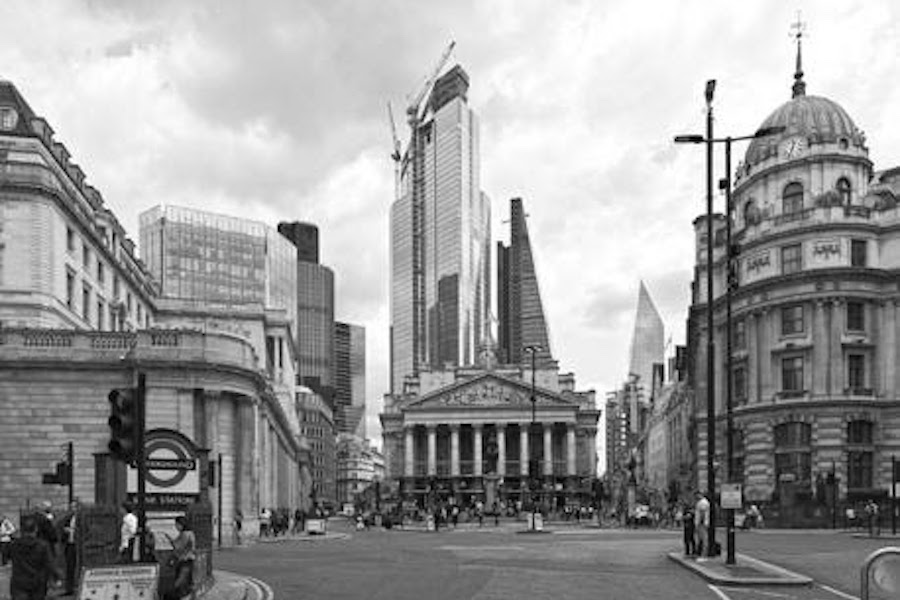How Lipton Rogers turned around the fortunes of an abandoned stump in the City of London.
This article was originally published in October 2019.
With a net floor area of 1.4m sq. ft, when 22 Bishopsgate is completed it will be the largest single office building in Europe, and one that delivers dozens of world, European or London ‘firsts’ for major multi-let offices. But it could have turned out completely differently, had it not been for the Great Recession, which led to an earlier scheme being abandoned mid-construction and Lipton Rogers taking over with a completely new design.
The Middle Eastern consortium that owned the site had been determined to develop out the ambitious, relatively extravagant ‘helter-skelter’ Pinnacle design originally drawn up. Construction began in 2008 and the foundations and basements were laid, but work stalled four years later with only eight floors of the concrete central core completed – attracting the rather disparaging nickname of ‘the Stump’. With about £500m already sunk into the project, the consortium’s funding sources had dried up.
Two years later, in a white-hot London property investment market, CBRE was commissioned to find a new joint-venture funding partner. The new investor would have a priority return on its money, with the consortium seeking to claw back some or all of its sunk equity thereafter. However, even with a much-discounted entry price, investors still found the Pinnacle’s costs, delivery risks and profit projections challenging.
While all this was happening, in parallel, Stuart Lipton and Peter Rogers had spent some three years working up more financially and commercially viable development plans for the site. Their approach was not merely an opportunistic hijacking of the misfortunes of international investors with limited experience of the London market. Their ideas and solutions were built on decades of working on major complex projects in London and in the City specifically. They had been there before – many times. Broadgate, Chiswick Park, Stockley Park and Paternoster Square are all examples of major complex projects where previous development attempts had not progressed and where the Lipton Rogers team turned dysfunction and distress into world-class developments by taking a completely different approach.
What are the ingredients in Lipton Rogers’ approach that enabled them to achieve this kind of turnaround at 22 Bishopsgate?
Understanding the unwritten rules of the planning process: While planning constraints are broadly rules-based, there is also an unwritten art to exploring the boundaries in order to achieve something exceptional for all stakeholders, including the planners.
Knowing your market: This means knowing what occupiers want and what the best developments are offering, not just in London and not just in offices, but exploring the full spectrum of experiences in the global market place.
Construction innovation: Lipton and Rogers were the first to introduce a construction management procurement approach on a major project in the UK – at Broadgate, also in the City of London. They also led the debate on efficient tower design, including their 2012 research project into cost-effective tower design for the City – one of a number of reasons why 22 Bishopsgate has an exceptionally low £/sq. ft development cost, in spite of its world-class specification.
An inside-out and back-to-front approach to design: It’s important to decide in detail how the space should look and be built to maximise functionality and efficiency – the core of the architect’s brief. Developer-led design principles should inform architectural design parameters. Also, subcontractors should be used as a vital ingredient in the consultative design process, not remote end-service providers intermediated by a main contractor.
Creating a brand: This means recognising that occupiers and employees want more than just an office to work in. It’s about creating experience and place as the essence of the brand.
The iteration of excellence: Building on the excellence of design, delivery and innovation on your other major projects – through your own experiences and those of others.
Hands-on leadership: Designing and delivering an exceptional major project is not a commodity process; you have to lead and manage from the top.
The results of this approach at 22 Bishopsgate included a massive 40% (600,000 sq. ft) increase in large and flexible floor area for a less than 10% increase in construction costs, transforming viability and profitability. Around 100,000 sq. ft of this space will be dedicated amenity space for occupiers. The facade too is exceptional: the first of its type in any major capital city building anywhere in the world, using the latest building management systems to minimise solar gain and maximise thermal efficiency and letting 60% more light into the 3m ceiling-height floorspace. Just some of the many reasons the four global real estate investors, led by AXA IM, committed to a world record-breaking £1.3bn speculative office equity funding – in spite of the uncertainties created by the Brexit referendum result.







